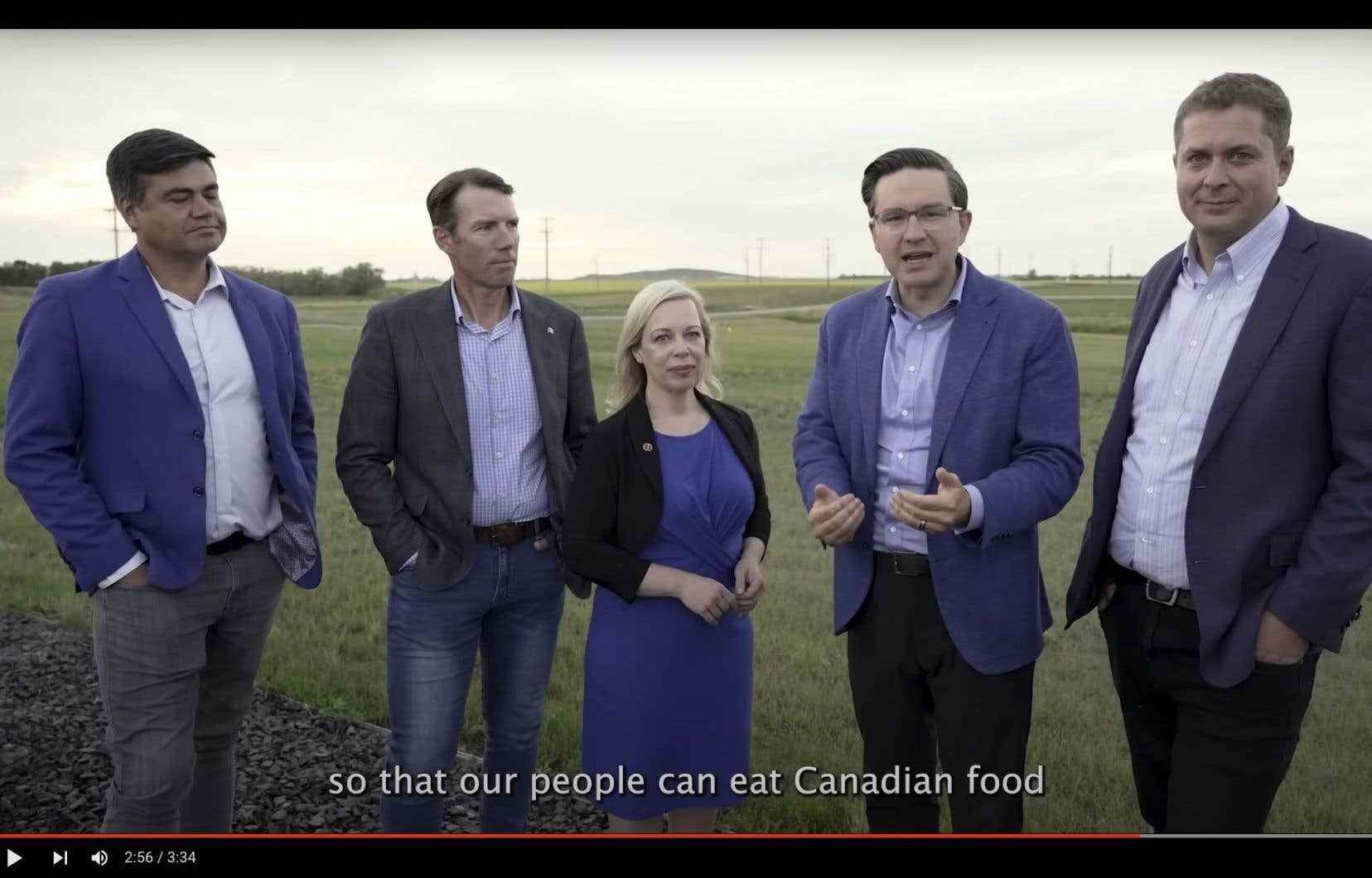The Conservative Party of Canada presents itself as a great defender of the country’s agriculture by suddenly opposing a federal greenhouse gas reduction target for farms developed in 2020, regardless of the fact that Quebec farmers … y are favorable.
“We stand up for all of rural Canada, in fact for all people who love to eat. Standing in a Prairie field, aspiring Conservative leader Pierre Poilievre voices his opposition to the Trudeau government’s target of reducing greenhouse gases from agricultural fertilizers by 30% by 2030.
His video, titled “Liberals attack farmers with more taxes,” features three elected officials and a senator supporting his candidacy. MP and former Party leader Andrew Scheer can be heard saying that farmers “don’t use a single drop of fertilizer they don’t need”.
The Poilievre camp is not alone in anticipating a disaster that would be caused by the Liberal nitrogen fertilizer pollution reduction policy of December 2020, and which is the subject of consultations which end this week.
Candidates Jean Charest and Roman Baber both shared on Twitter an article that claims to outrage farmers. Leslyn Lewis went so far as to predict tractor uprisings. “The Freedom Convoy will look like a footnote in history to be compared to the troubles that are coming,” she wrote on her site.
Demonstrators have indeed rolled on July 23 to Ottawa and other Canadian cities in solidarity with an agricultural protest movement in the Netherlands. The event, openly inspired by this winter’s Freedom Convoy, went largely unnoticed except for modest local coverage.
A few days later, the Conservative Party of Canada (CPC) spent around $2,000 on ads on the Facebook platform to promote alarming messages about the federal environmental target.
Quebec farmers in favor
Verification made, no real major demonstration on this subject is on the program of Quebec farmers. In fact, the latter are rather in favor of the objective of reducing GHGs from fertilizers, affirms the president of the Union of agricultural producers (UPA) of Quebec.
“We were already working on nitrogen management. And we must not hide it, with climate change, we must also adapt our practices,” explains Martin Caron in an interview with To have to.
The general manager of Producteurs de grains du Québec, Benoit Legault, confirms this: “in the grain sector, the main element is the part of the fertilizer which is not recovered in the plants and which can be lost in the atmosphere”. These losses are a major source of greenhouse gases.
The subject is complex and technical, and was discussed at the recent federal-provincial meeting in July, which concluded with a $500 million increase in agricultural funding to $3.5 billion in federal funding. .
Far from opposing the targets, the Quebec government presents itself as a champion of GHG reduction in the agricultural environment. It has its own target for fertilizers, calculated on the basis of a 15% reduction in the use of nitrogenous fertilizers — and not just on their emissions — which is considered to be as ambitious as, if not more than, the federal objective. Alberta, Saskatchewan and Ontario, on the contrary, expressed their dissatisfaction.
“Maybe farmers in other provinces aren’t ready,” Caron said. There are different crops that need more nitrogen than others. If we increase the cultivation areas, there is a risk of compromising [l’atteinte des cibles] “, he also qualifies.
The president of the UPA nevertheless maintains that it is quite possible to optimize the use of farm fertilizers in Quebec. For example by using better products, at more opportune times, or by adopting new, more productive practices. “It will help save costs,” he calculates. Chemical fertilizers are expensive, and require a large amount of energy to manufacture.
The sinews of war, according to him, is access to funding for scientific research. Three specialists joined by The duty abounded in the same direction. No one was of the opinion that a 30% reduction target for GHGs caused by fertilizers is tantamount to torpedoing the profitability of farms. Doubts remain, however, about how to calculate progress.
Fertilizer dealers
“These arbitrary fertilizer reduction targets will continue to drive up the price of food. […] and it’s going to cost our economy an estimated $48 billion by 2030,” reads the Conservative Party website page linked to its Facebook ads.
The party cites as a source a study carried out by the industry and which bases its calculations on a drop in production proportional to a drop in fertilizers, which is neither the objective of the federal government nor a scenario envisaged by farmers.
Fertilizer Canada has repeated its opposition to reduction targets to elected officials in Ottawa 65 times, and to government officials about 50 times, the lobbyist registry shows (some people met more than once) .
In an email response, Conservative agriculture critic John Barlow cites a Canadian Federation of Independent Business (CFIB) poll that found nearly three-quarters of farmers (72%) “oppose liberal fertilizer reduction policy”.
In fact, the CFIB, which also represents the industry, began its question by: “if the federal government forced your agri-food company to reduce its use of nitrogen fertilizers by 30%”, a scenario that is not envisaged by Ottawa.
The office of the Minister of Agriculture, Marie-Claude Bibeau, confirmed to the To have to that there is no plan to force any particular farmer, or even any particular province, to meet targets. Unlike Quebec, the federal government does not aim to reduce the use of fertilizers, but rather the GHGs emitted. Despite repeated requests from the To have toCFIB was unable to explain where the premise of its question came from.
In a statement, the federal Department of Agriculture and Agri-Food Canada explains that its studies “have revealed the possibility of optimizing the use of nitrogen fertilizers and thus reducing GHG emissions while maintaining or increasing yields”. The best approach might vary from region to region, and from farmer to farmer.
